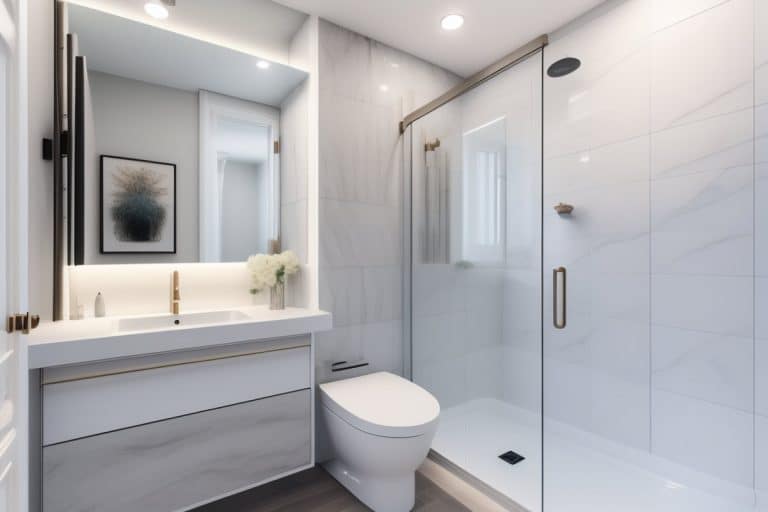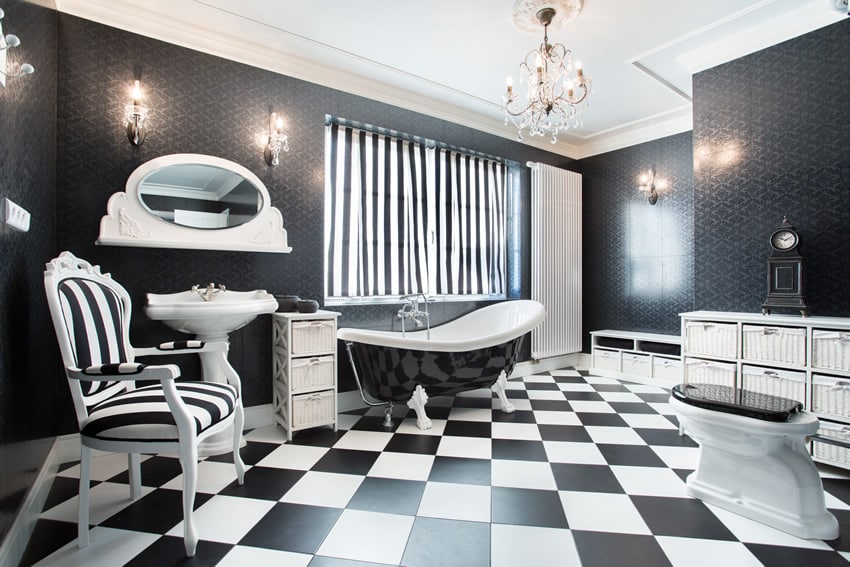How To Choose Luxury Bathtubs For The Ultimate Bathing Experience
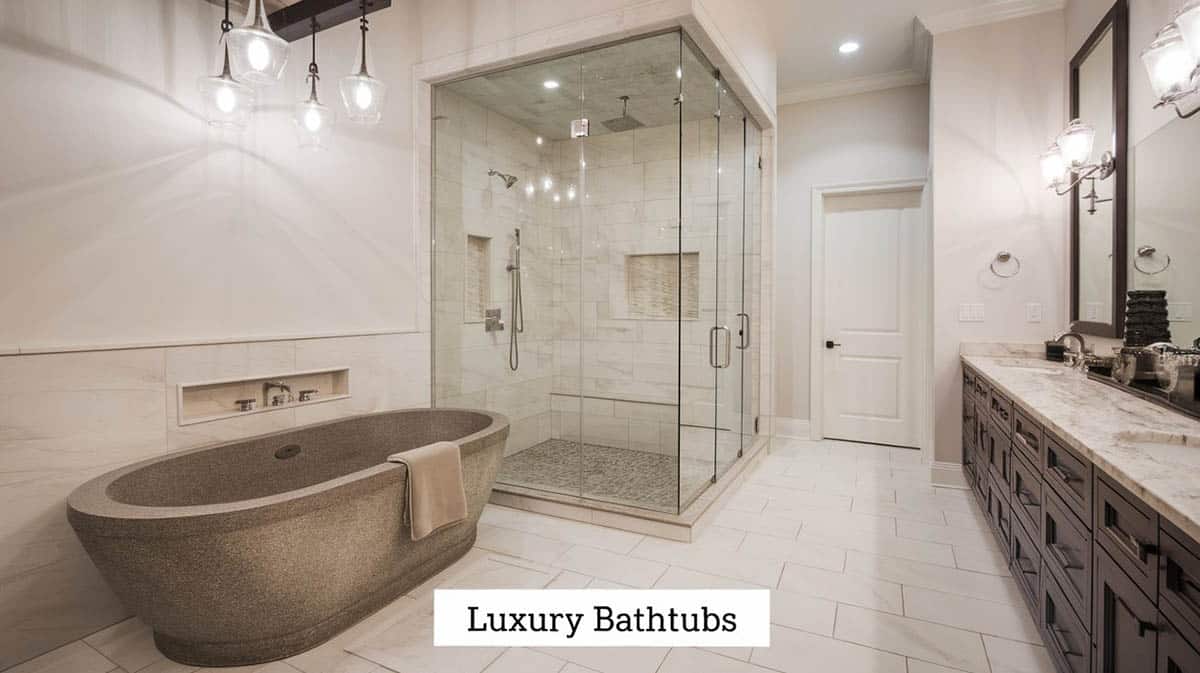
This gallery features luxury bathtubs in a variety of design styles. Imagine luxuriating in one of these stunning master bathrooms complete with high end finishes and elegant decor. These beautiful pictures showcase beautiful soaking tubs to help you find the one that is perfect for you.
How To Choose A Bathtub For A Luxury Experience
A bathtub is often the jewel of a luxury bath suite, so start by thinking of the material as both for tactile pleasure and as a design statement. Cast iron, enamel-coated and kiln-fired, delivers that satisfying “thunk” when you tap it, a signal of solid craftsmanship. It feels much more luxury than, say, fiberglass. Its high thermal mass means water stays steamy long after you sink in, which is perfect for lingering soaks. Before installing, just confirm your floor joists can handle the weight; older homes may need reinforcement before you set a 400-pound tub plus 60 gallons of water.
For those who crave spa-like warmth without the heft, a solid-surface composite such as stone resin or volcanic limestone look and feel exotic. These engineered blends feel like honed stone, hold heat better than acrylic, and can be molded into sculptural silhouettes with razor-thin rims, and are an immediate cue of bespoke luxury. Matte white finishes pair beautifully with brushed-gold fixtures for a modern resort vibe, while a charcoal exterior adds drama against pale marble floors.
If tone leans toward old-world opulence, nothing tops hand-hammered copper for that old-world charm. The material’s living finish develops a rich patina that actually resists bacteria, and the gentle give of the metal feels warm the moment you touch it. Before buying, specify at least 16-gauge copper with TIG-welded seams; and watch out for thinner sheets that sound tinny and may dent easily. Tie the look together by repeating weathered copper on the vanity pulls or mirror frame so the tub feels curated, not plopped in, and to tie the design together.
For a coastal penthouse or zen retreat, and those with the budget, choose natural stone, think travertine, carrara marble, or basalt, as these deliver extra spa gravitas. Each piece is carved from a single block, so veining flows uninterrupted. Because stone tubs often weigh 1,000 lbs or more, place them on the slab level or over a load-bearing wall. Floor-mounted tub fillers with a high-flow cartridge are essential; otherwise, filling can take 20 minutes and break the illusion of effortless luxury.
Even humble acrylic can read upscale when you select a double-walled version with integrated insulation and a high-gloss finish that mimics porcelain. Look for reinforced fiberglass backing and a 3 mm or thicker acrylic sheet to prevent flex. Add perks like chromatherapy LEDs, an air-massage base, or a slotted overflow for a deep-soak silhouette that rivals bespoke pieces at a friendlier price point.
When buying, frame your decision around three sensory cues: temperature (how warm the surface feels dry and wet), texture (velvety matte vs. glassy smooth vs. hand-tooled), and sound (the calming thunk of cast iron or the hushed thud of stone). Consider your lifestyle and what works in your home by looking at the weight, maintenance, and desired soak time, and you’ll land on a material that not only looks spectacular in photos but delights every single day.
Characteristics And Benefits Of Different Tub Materials
| Material | Temperature Feel | Texture | Sound | Weight | Maintenance | Soak Time | Luxury Notes |
|---|---|---|---|---|---|---|---|
| Cast Iron | Cool to touch, warms slowly | Glossy enamel finish | Deep, solid thunk | Very heavy (300–500+ lbs) | Low; durable, chip-resistant | Excellent—retains heat well | Timeless and solid; vintage elegance |
| Solid Surface (Stone Resin, Volcanic Limestone) | Warm to touch, retains heat well | Velvety matte, stone-like feel | Soft, dense thud | Moderate to heavy (150–350 lbs) | Low; non-porous and easy to clean | Excellent—holds water temp | Modern, sculptural; spa-like aesthetics |
| Copper | Warm immediately; very responsive | Hand-tooled; lightly textured | Soft metallic resonance | Moderate (100–200 lbs) | Medium; develops patina, occasional waxing | Good—conducts and radiates heat fast | Artisan-crafted, old-world luxury |
| Natural Stone (Marble, Travertine, Basalt) | Cool to touch, warms slowly | Honed, natural stone texture | Hushed, weighty sound | Extremely heavy (600–1,200 lbs) | High; sealing required, risk of staining | Excellent—retains heat for long soaks | Ultra-luxury, sculptural showpiece |
| Acrylic | Neutral to slightly warm | Glossy and smooth | Light, hollow tap | Lightweight (60–100 lbs) | Low; easy to clean, can scratch | Fair—cools faster than others | Budget-friendly with modern upgrades |
Here are some of the most popular types of bathtubs and why you might consider them:
- Acrylic – Acrylic bathtubs come in a wide range of shapes and sizes. They are lightweight, hold in heat, and are more resistant to abrasions than other types. However, they are usually more expensive.
- Cast Polymer – A synthetic material, cast polymer looks a lot like real stone and can resemble onyx or granite.
- Enameled Cast Iron – Heavy, durable and solid, a cast iron tub can retain heat well and has been a solid choice for many years that is slowly losing popularity.
- Enameled Steel – Less pricier than cast iron, an enameled steel tub is more prone to chipping and noisier while running water.
- Gel-coated Fiberglass – Economical and lightweight, a fiberglass tub is available in a lot of different styles.
- Cultured Marble – The luxurious look of marble can be amazing when featured in a bathtub. However, marble can often require more maintenance, can scratch easily, and cost a lot more than a bathtub using more traditional material.
Beautiful Bathtubs

In the image above, simplicity is key even for transitional and traditional style interiors. This one is a great example of a minimalist transitional-style bathroom. It uses a light and simple color scheme composed of white and gray to create this lovely design. The white bathtub definitely became the star of the bathroom as its white ceramic body stood out against the gray ceramic flooring and was strategically placed right beside the window.
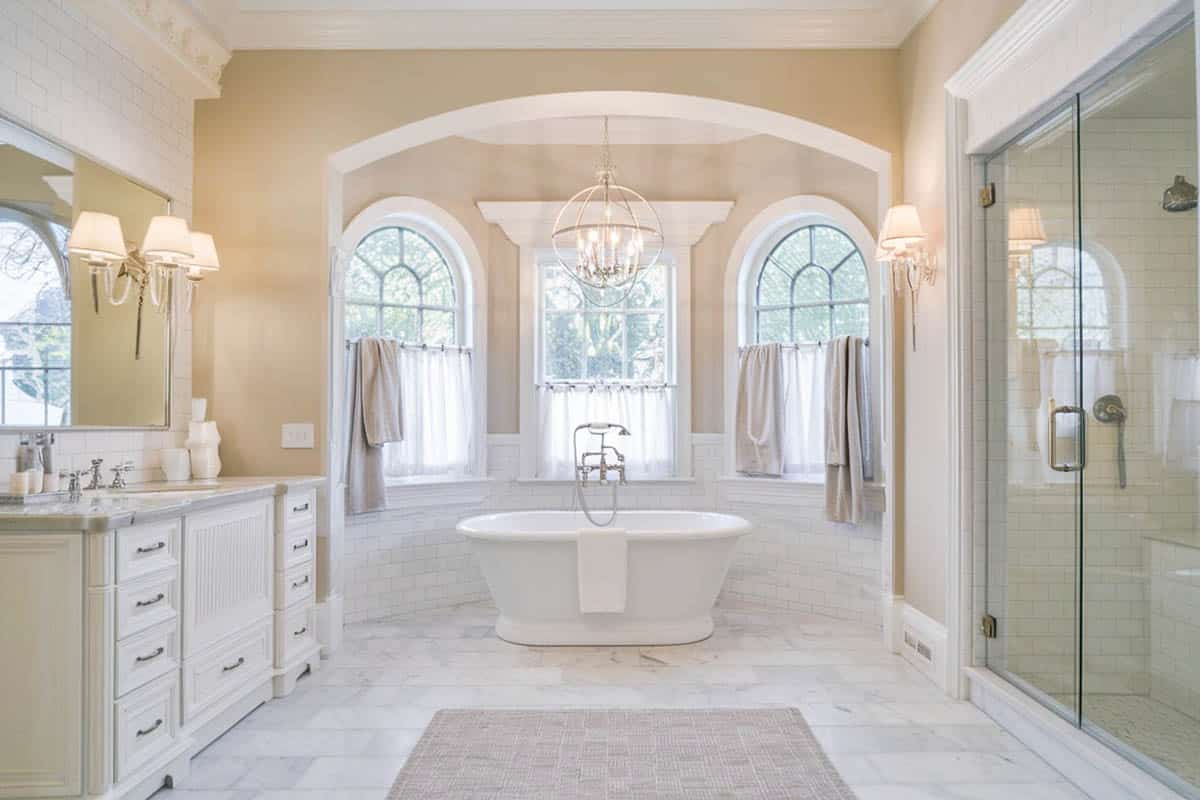
This transitional style bathroom goes for a warmer color scheme, combining light beige with white to create this lovely bathroom design. Elegantly laid out on the floors are white marble tiles, while the walls have a combination of white subway tiles and light beige paint with white moldings. The bathroom has a bay window in which there are 3 casement windows providing light and a nice garden view of the bathroom. The freestanding tub was placed in this area, along with an accent chandelier right above it, making it the focal point.
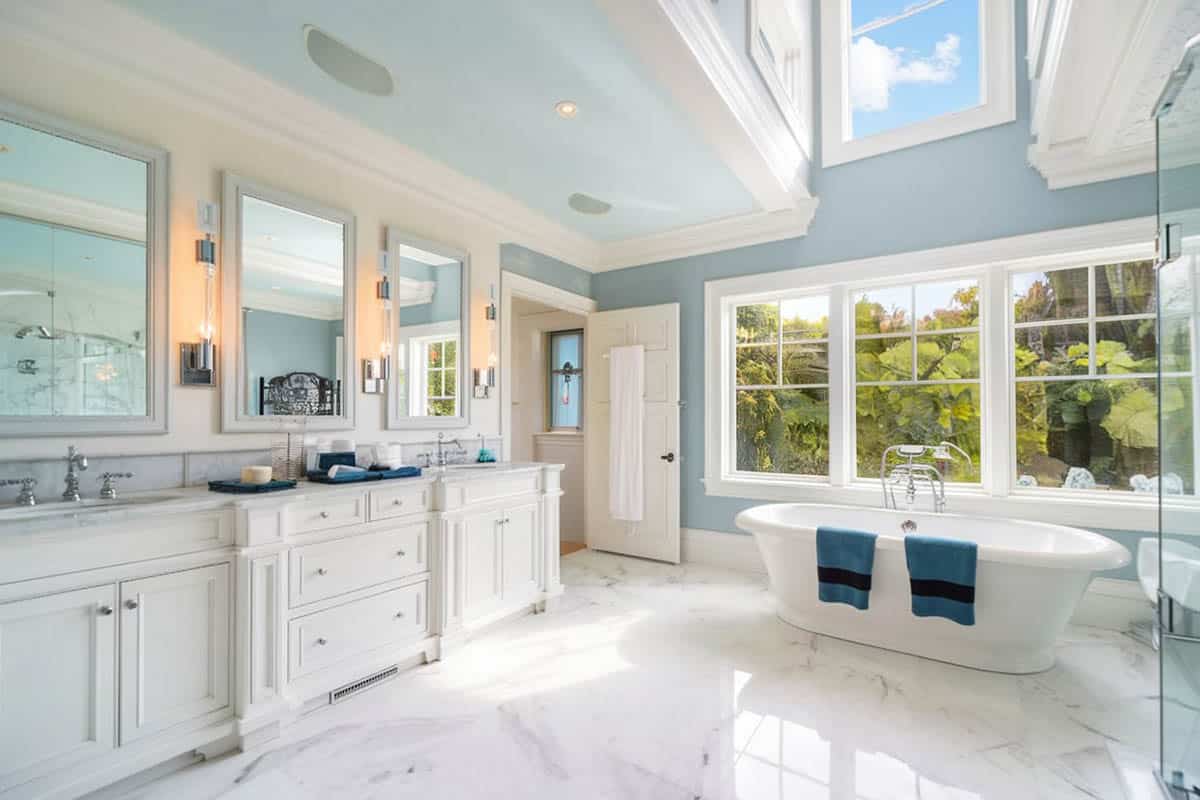
The minty blue walls used in this bathroom design definitely give this room a fresh and cool feel, instantly making it look young and vibrant, yet still maintaining subtle elegance. This bathroom is quite big, with a generous ceiling height, making it feel more spacious. Because of the wall color, the rest of the bathroom keeps it simple, using white tiles, cabinets, and white marble. The bathtub was placed right beside the large window and right below the upper window, so even if there’s no chandelier, the natural light seeping through the windows would definitely accentuate it.
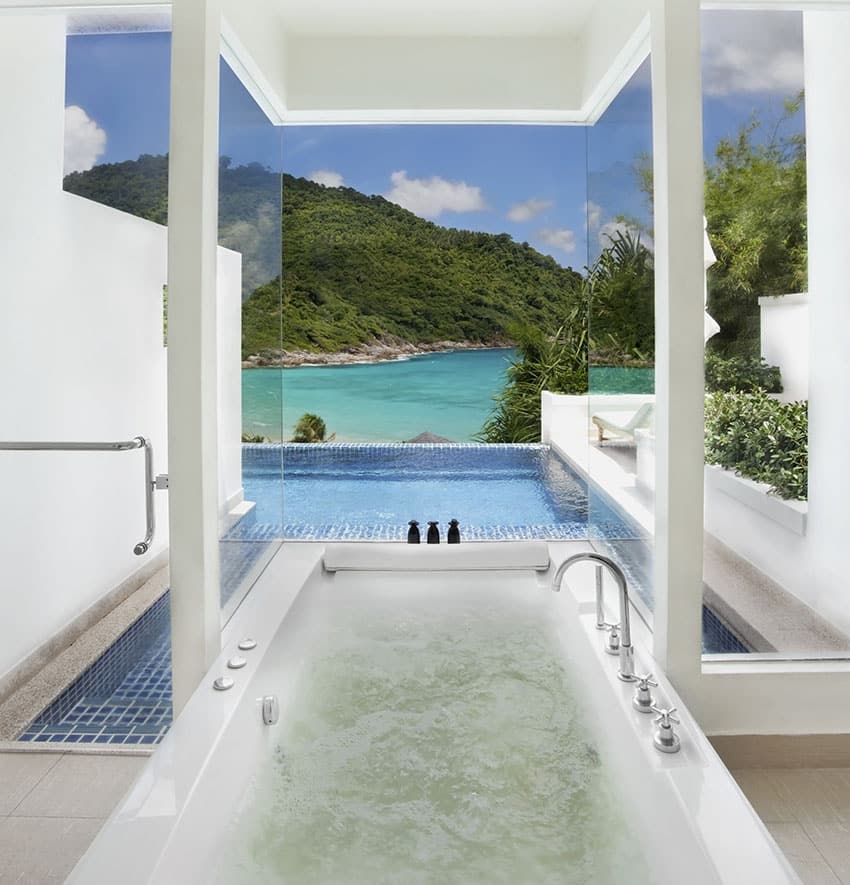
Luxury bathtubs with million-dollar views are the ultimate in relaxation. This bathtub offers stunning tropical ocean views while soaking in pure luxury. With private walls and a private vista, this tub provides the ultimate relaxing retreat to enjoy the million-dollar views. Through the nearby glass door, one can exit the crystal clear mosaic swimming pool to slip into this inviting bathtub.
Related Bathroom Galleries You May Like:
How to Choose a Bathtub – Beautiful White Bathrooms – Luxury Shower Pictures



